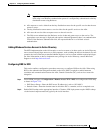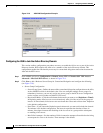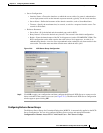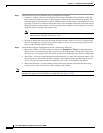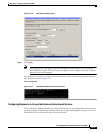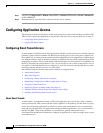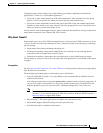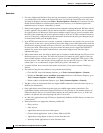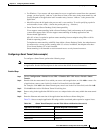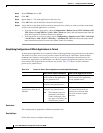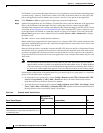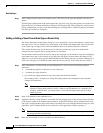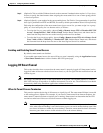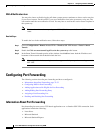
72-45
Cisco ASA 5500 Series Configuration Guide using ASDM
Chapter 72 Configuring Clientless SSL VPN
Configuring Application Access
• For Windows, if you want to add smart tunnel access to an application started from the command
prompt, you must specify “cmd.exe” in the Process Name of one entry in the smart tunnel list, and
specify the path to the application itself in another entry, because “cmd.exe” is the parent of the
application.
• Mac OS requires the full path to the process and is case-sensitive. To avoid specifying a path for
each username, insert a tilde (~) before the partial path (e.g., ~/bin/vnc).
• Smart Tunnel and Secure Desktop (Vault) Interoperability
Cisco supports smart tunneling inside a Secure Desktop (Vault) environment on all operating
systems that support Vault. We also support smart tunneling of desktop applications and
browser-based applications.
ASA 8.3 or later is required to perform smart tunneling from an endpoint using IE8 or a 64-bit
Windows operating system.
To implement smart tunneling with IE8, from within a Secure Desktop (Vault), the endpoint must
be connected to a secure gateway running ASA 8.3 or later; in addition, the endpoint must have
Cisco Secure Desktop 3.5 or later installed.
Smart tunneling is not intended to restrict network access to only internal resources.
Configuring a Smart Tunnel (Lotus example)
To configure a Smart Tunnel, perform the following steps:
Note These example instructions provide the minimum instructions required to add smart tunnel support for
an application. See the field descriptions in the sections that follow for more information.
Detailed Steps
Step 1 Choose Configuration > Remote Access VPN > Clientless SSL VPN Access > Portal > Smart
Tunnels.
Step 2 Double-click the smart tunnel list to which you want to add an application; or click Add to create a list
of applications, enter a name for this list in the List Name field, and click Add.
For example, click Add in the Smart Tunnels pane, enter Lotus in the List Name field, and click Add.
Step 3 Click Add in the Add or Edit Smart Tunnel List dialog box.
Step 4 Enter a string in the Application ID field to serve as a unique index to the entry within the smart tunnel
list.
Step 5 Enter the filename and extension of the application into the Process Name dialog box.
Table 72-4 shows example Application ID strings and the associated paths required to support Lotus.
Table 72-4 Smart Tunnel Example: Lotus 6.0 Thick Client with Domino Server 6.5.5
Application ID Example Minimum Required Process Name
lotusnotes notes.exe
lotusnlnotes nlnotes.exe
lotusntaskldr ntaskldr.exe
lotusnfileret nfileret.exe



